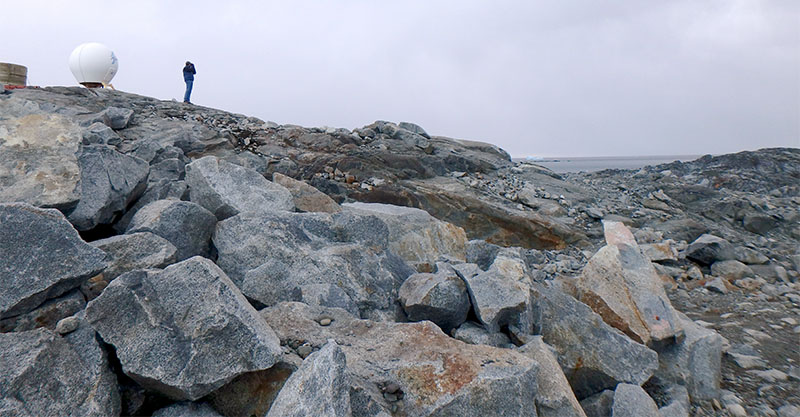
After four days when we first got here with the weather keeping us from getting out in the boats to dive, we’ve had five straight days of relative calm that has allowed us to get out each day.
Fortunately, we could do our gear check dives from the station’s floating dock during the bad weather so were able to take advantage of that good weather immediately. High priority the first day was Sabrina and me looking for her substrate experiment at one of the three sites they were placed at the end of our field season last year. As she discussed in her post two days ago, finding the experiment was a wonderful relief and great thrill.
On days when the weather looks like it will cooperate for diving, my morning starts a bit less dramatically with a walk up the ‘road’ to the highest point on station (next to the TerraLab building that you will hear about in a future post). That’s what I’m doing in the photo at the top.
With my binoculars from that vantage point, I am able to get an idea of what the sea surface conditions are like at places that we might want to dive at that day. Jim, Bill, and I then compare our science goals with what the conditions are at the various sites where we might accomplish them and agree on a field plan for the day. Commonly that involves one dive team going out in the morning and another in the afternoon.
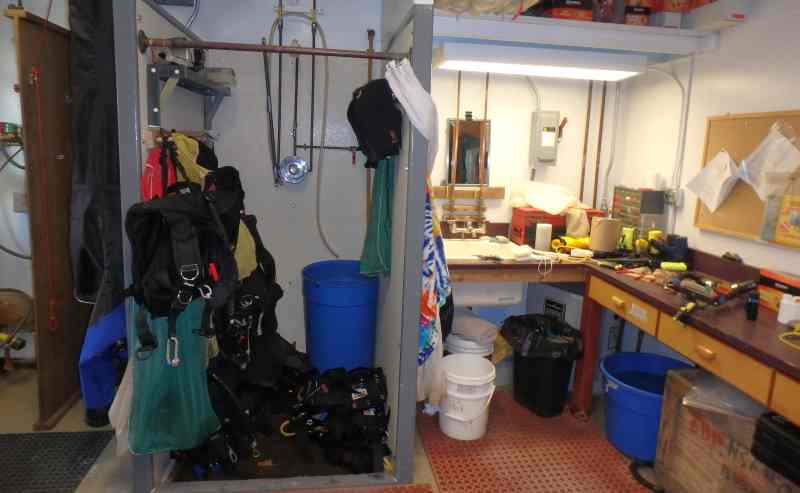
If we’ve been out diving the day before, most of our gear will be hanging on hooks in the dive locker shower where it could drip dry all night. That’s what you see in the photo above. Just to the left of the shower is my blue-topped drysuit hanging upside down. To the right is obviously the dive locker sink.

The above panoramic photo is taken from just in front of that sink, and shows the rest of the dive locker. It is most efficient for one person to be responsible for putting away all the dry gear from the shower. That is another part of my normal morning routine. Each diver has a large, deep drawer for our personal gear which are the colored bins you see in the center of the photo. To the left of that is where we hang our toasty-warm drysuit under-suits.
To the right of the colored bins is the door to the compressor room where the dive tanks are filled and racked. Beyond that are – increasing in size – our red, yellow, and green bags for collecting underwater organisms. To the far right in the panoramic photo, and unfortunately a bit dark in the photo, is the area where everyone else’s drysuits are hanging (also upside down). Just beyond view to the right of that is my suit which is shown at the left side of the first dive locker photo, above. The dive locker, while functional, is actually fairly small. The panoramic photo makes it look bigger than it really is.
Our group meets at 8 AM each day. Part of that is discussing the dive plan ideas that Jim, Bill, and I have considered. Once we are sure that dive plan works with everyone’s research needs in the lab (and rearrange the plan if not), we disperse and get to work.
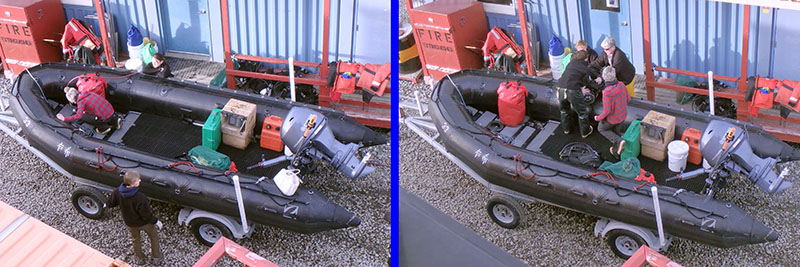
For the divers of the morning dive, getting to work means getting her or his dive gear ready to go and out on the porch of the dive locker. That’s part of what you see in the photos above. For the dive tenders and anyone else who is able, getting to work means checking and, as needed, topping-off the air levels in the various parts of the inflatable Zodiac boat (above left) and loading the divers’ gear into the boat (above right).
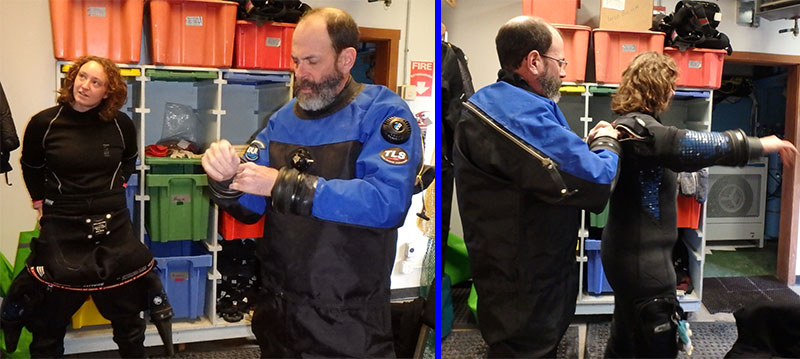
While the tenders and tender-helpers are airing-up and loading the boat, the divers are starting to get into their drysuit under-suits and then putting on their drysuits. On the left above Sabrina is pulling up her drysuit over her under-suit while I am adjusting the waterproof seal on one of my wrists (there is also a waterproof seal at the neck). On the right in the photo above I’m zipping Sabrina’s watertight zipper to seal her into her drysuit.

As the divers are finishing getting into their drysuits, the tenders are launching the Zodiac. One of the Palmer Marine Technicians (MTs) drives the boat trailer down the boat ramp and one of the tenders gets in. After the MT unties the bowline of the boat from the trailer, the tender drives the boat off and heads to the floating dock to pick up the divers and other tender. That is what CJ is doing in the two photos above.
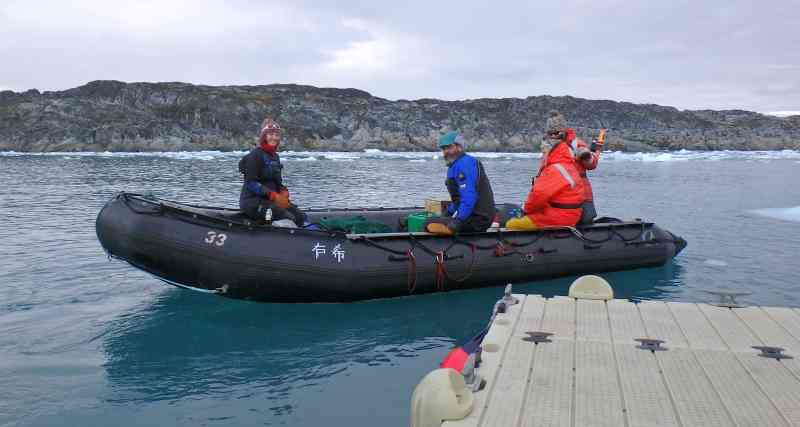
The divers and other tender, in this case Jim, then get in with CJ and head off for the morning’s dive. You will hear a lot more about how things work from that point on in future posts.